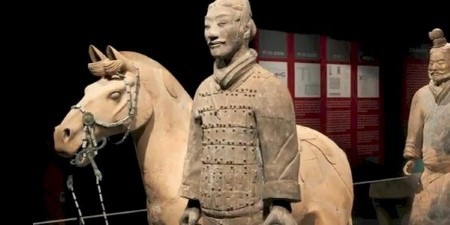Ferghana horses were one of Chinas earliest major imports,
originating in an area in Central Asia.
Dayuan, north of Bactria, was a nation centered in the
Ferghana Valley of present day Central Asia, and even as early as the Han
Dynasty, China projected its military power to that area. The Han imperial
regime required Ferghana horses and imported such great numbers of them that
the rulers of Ferghana closed their borders to such trade. That move resulted
in a war that China won. In 102 CE, the Chinese required of the defeated
Ferghana that they provide at least ten of their finest horses for breeding
purposes, and three thousand Ferghana horses of ordinary quality. However,
there are other views: the Records of the Grand Historian and Book of Han
provide no description of Ferghana horses, and as it seemed from these
chronicles they were not employed in any known Han expeditions and campaigns.
Chinese statuary and paintings indicate that these horses
had legs that were proportionally short, powerful crests, and round barrels.
The forelegs of the Chinese depictions are very straight, resembling the Guoxia
horse of present day China. According to tradition, these horses sweat blood,
hence the Chinese name: (hàn xie ma, "sweats blood horse"). Modern
authorities believe that blood-sucking parasites caused sweat to get mixed with
blood when the horses were worked.
